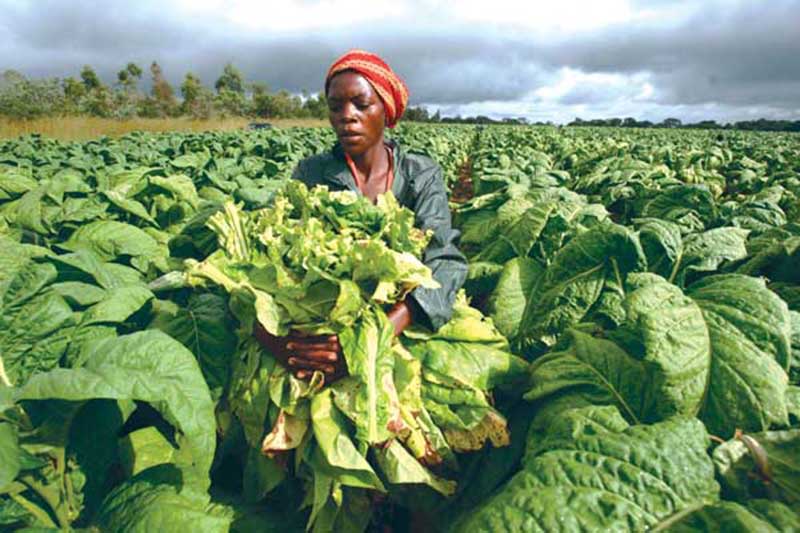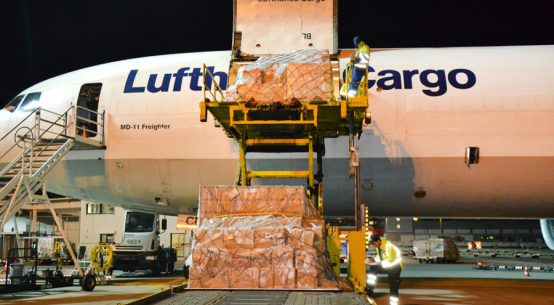Photo: A Tobacco-farmer. ZIMBABWE’S tobacco yields have been growing since 2008, according to figures obtained from the Tobacco Industry marketing board (TIMB).
Harare (The Herald) – Zimbabwe’s economic problems are largely a function of production deficiencies, which require the country to exploit the current pro-business environment to increase productivity for export growth and economic turnaround, central bank governor Dr John Mangudya said.
According to the Reserve Bank of Zimbabwe governor, exports “are the salvation for this economy”, yet the country continues to consume much more than it generates, a situation which has plunged the country into a biting foreign currency crisis.
Imagine your Ad placed here
Dr Mangudya said in an interview last week that Zimbabwe did not have a currency crisis, but production challenges, which if resolved would inevitably enable it to wade out of its chronic economic problems. The central bank governor stressed the point that Zimbabwe needed to rapidly increase production in quick wins sectors that included agriculture, tourism and horticulture in order to increase generation foreign currency, one of the most telling evidence of its economic challenges.
“I remain positive about this economy and I have always maintained that Zimbabwe does not have a currency crisis, but that Zimbabwe’s problems have everything to do with limited production. Exports are the salvation of this economy, but we need to produce first,” he said.
Dr Mangudya said while one of the reasons given for the slow pace of the economic turnaround in Zimbabwe was the notion that the country was a high-cost producer, incentives such as 10 percent bonus on exports were meant to reduce the cost of production for producers.
“The export incentive is meant to ensure that producers reduce their cost. Our expectation is that we give that incentive, producers would also be able to reduce their prices by as much as 10 percent, thereby making Zimbabwe’s products competitive on the global markets,” he said.
The RBZ increased the export incentive from 5 to 12,5 percent for tobacco farmers. It has also committed to increase the incentive for individual firms whose application would have been approved, depending on the company’s contribution to the generation of foreign currency.
To date, it had hiked the rate to a high of 17,5 percent for certain companies.
The central bank chief said all economic agents needed to sweat out the Rapid Transfer Gross Settlement (RTGS) balances they are sitting on driving production in farms, mines and industry in line with the mantra of continuously increasing production and growing export earnings.
One of Zimbabwe’s biggest economic problems pertains to the shortage of foreign currency and by extension cash, considering the country uses a basket of currencies dominated by the greenback. But there is a mismatch between bank balances and cash in circulation.
The huge RTGS balances have created unsustainable pressure on and demand for cash and foreign currency, which has degenerated into some crisis. Shortage of foreign currency has negatively impacted the ability of industry to import critical raw materials required for production.
Capacity utilisation in Zimbabwe’s manufacturing sector declined from an average of 47,4 percent last year to 45,1 percent in 2017, a survey by the Confederation of Zimbabwe Industries said in October last year.
The industrial lobby’s chief economist Daphne Mazambani said capacity utilisation had been constrained by high production costs and shortages of foreign currency.
Zimbabwe’s exports increased by 40 percent to $3,5 billion between January and November last year compared to $2,5 billion during the comparable period in 2016, official trade figures show. The improved performance during the 11-months period is largely attributed to a raft of measures Government and the Reserve Bank of Zimbabwe have announced to boost domestic output and tame the trade imbalance.
Latest data from the Zimbabwe National Statistics Agency also indicated that although the value of exports had improved during the period under review, the country still recorded a negative trade deficit.
For more Logistics News, Follow us on TWITTER Follow us on FACEBOOK
Between January and November 2017, imports totalled $4,9 billion reflecting a trade deficit of $1,4 billion. Zimbabwe exports to different countries across the globe with South Africa its largest trading partner.
The country’s exports largely comprise agricultural produce and minerals while imports were dominated by woven fabric, synthetic fibre, canvas and ornamental trimmings and medicines among others.











